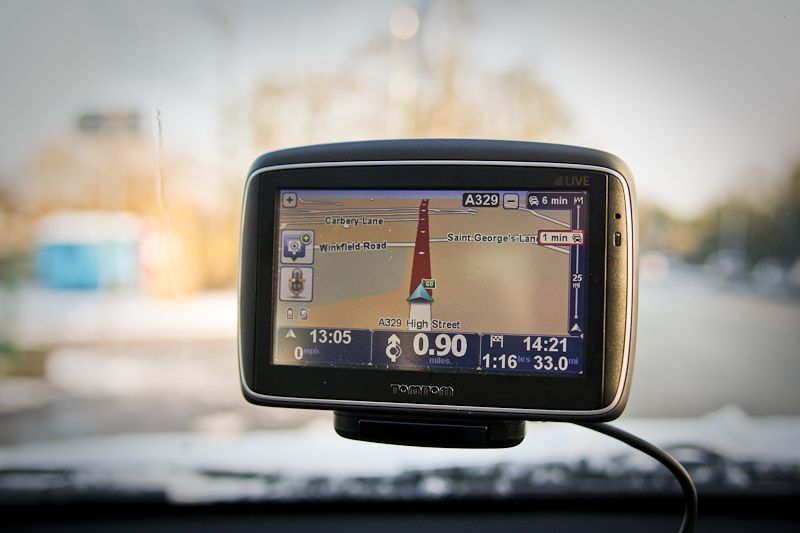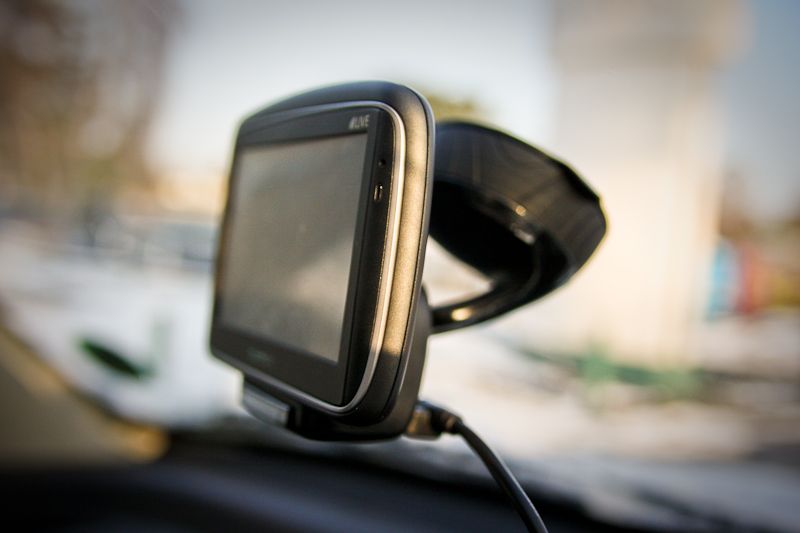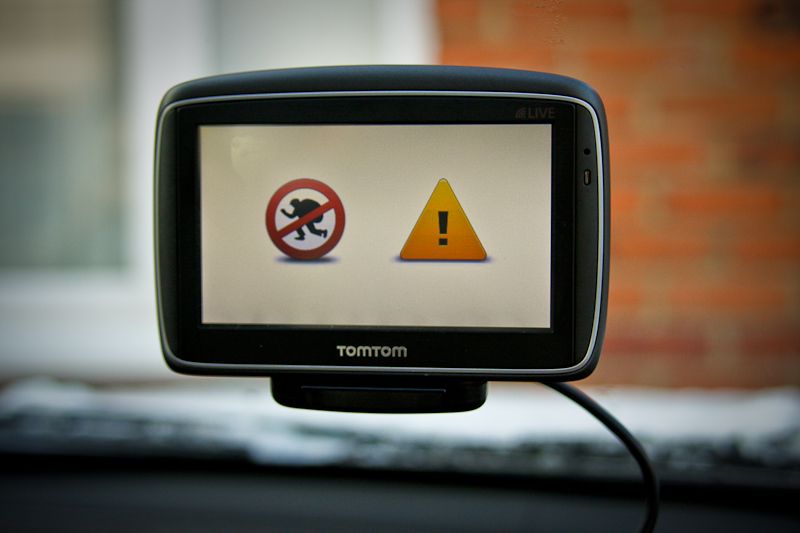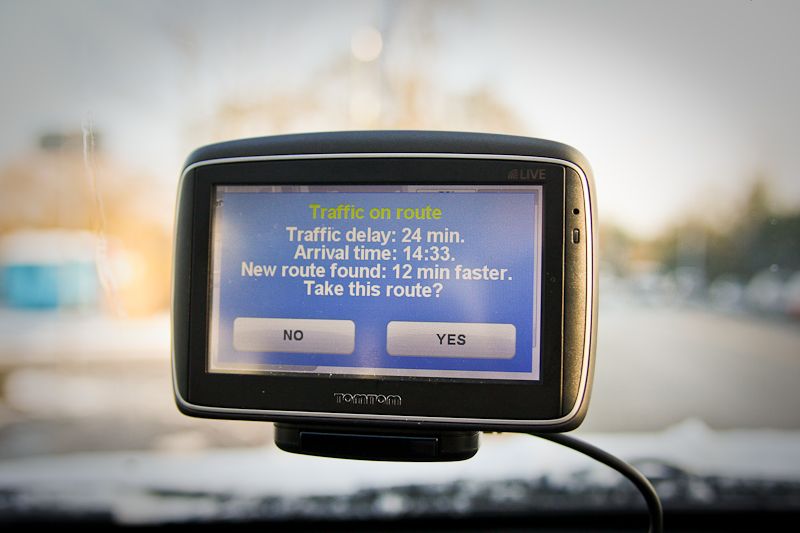As mobile phones and Google continue to nibble away at the traditional GPS market, can TomTom stop such an advance with the launch of its latest Go series? We grabbed the TomTom Go 950, the top of the range model from the company, jumped in a car and hit "Navigate" to find out.
Our quick take
As a comprehensive GPS satnav device there is virtually nothing to fault - high praise indeed. This pretty much does everything you need and a couple of other things that you probably don't, I mean do you really need a picture viewer for example? The TomTom Go 950 is for people who live, eat and breathe in their car for most of the day, every day, 365 days of the year.
The problem is, if that isn't your situation, there are so many cheaper alternatives out there, even from TomTom, meaning we wouldn't recommend this over other devices on the market. This is the big daddy of them all, that makes the free offerings look pathetic. Trouble is that at £300 for the device and £96 a year for all those other offerings, you've really got to spend a lot of time on the road to justify the outlay.

TomTom Go 950 satnav - 4.0 / 5
| FOR | AGAINST |
|---|---|
|
|
As you might expect for a device that costs £300 you get a unit that is solid, well built, and packing plenty of features. It boasts a large touchscreen display, no buttons aside from the power switch and a docking cradle that is larger than a cheese and tomato bap.
As with previous models, the matte screen works well in sunlight and from a hardware perspective, it's standard TomTom fare. The processor is powerful enough to skip through the tasks at pace and the GPS receiver quick to find us, even on a cold start. The speaker around the back is loud enough to hear what's going on even over a car radio and there is Bluetooth so you can double the unit as a handsfree for your phone. You also get a microSD card so you can store photos on the device as well (why?) and the cradle houses the power cable for your cigarette lighter.
But while hardware is important, that isn't the focus here. After all, the touchscreen does virtually all the work. Where TomTom has focused its efforts is in the ease of use of the device, and how it goes about getting you from A to B. If you've read a TomTom review on Pocket-lint before you'll know that we like the interface and so do many others (the TomTom One was voted Best Car Gadget 2009 in the Pocket-lint Awards by a panel of over 80 experts).
Power up the system, choose where to navigate to and you're presented with a couple of new options in this new device - the main one being "Frequent destinations". Working in exactly the same way as the "Home" option, the idea is that you can now add your workplace, school and other places you go to a lot. It's as useful as it is dangerous. Now when the device is stolen, the robber will know so much more about your movements and be able to rob your house, your work, or follow you to the gym.
TomTom do offer, we've found out, a way to password protect the device, but it's so convoluted that we would be surprised if anyone would.
"You need to connect the device to your PC and log in to TomTom Home. Select 'Operate my GO'. A small bit of software may then need to download, which enables you to operate the device via your computer. Open the Preferences option using your PC and select 'set owner'. Click 'no' when it asks if you want to change address details, and it will then say 'do you want to protect your GO with a four digit password'..." were the instructions handed to us when we asked the company. Not exactly easy.
What would be more useful is if TomTom introduced a way to lock the device with a pin code from within the device at the press of a button like, virtually, every mobile phone can.
Get past this though and you can punch in your chosen address in a variety of ways. The TomTom Go 950 supports postcode, Google Local Search, point on map, point of internet, latitude, longitude, position of last stop as well as recent and favourite destinations. You can even bark your orders at it with your voice.
Once you've keyed that in the software then works to get you the best route. Here within the settings menu you can pre-determine whether you want to be asked the kind of route each time or have it automatically choose your favourite setting each time. You even have the option of fastest route, shortest route, avoid motorways, whether or not you are walking or on a bicycle or if you want to limit your speed (good for caravans). There is also a new option- Eco - that takes into account stops and such like. In our tests we found that on shorter journeys it made very little difference.
Once you've chosen your route TomTom has added another layer of information into the mix when it comes to seeing your proposed path. Now rather than just give you the estimated time of arrival and distance, it gives you Live data as well (as long as you've signed up). This will tell you about traffic on the route (if there is any) the cheapest petrol on route and how many safety cameras there are.
The information is really to give you a glance of what is going on rather than offering you anything that could make a difference to your journey.
So you've got past the planning process, now it's on to the driving bit. Here the map has been cleaned and tidied (very much in the same way Google has just done with its mapping software) and the overall result is that it's a lot less cluttered to view. It's a good job too as TomTom have now loaded the Head Up Display (HUD) with so many stats and details that at times it can feel overwhelming.
There are details on your current speed, on the speed limit for the road you are on, destination time, the miles you've got left, the road you are on, the road you are about to turn on to, a quick link to say a voice command, a button to let you add safety cameras that aren't on the map, possible weather warnings (#uksnow) and that's before you get to the traffic timeline on the right-hand side.
For the most part it's a wonder how they've managed to get all this information on the screen without completely losing you, but you can find that you'll need a couple of glances (unless you are on the motorway) to see what's what.
Thanks, as we've said, to a speedy processor and GPS chip, the maps fly along, and we had no problem reading the instructions or waiting for the unit to "catch up". Recalculations were quick if we missed a turning (on purpose for testing you understand) and if you've opted for the HD traffic feature (£8 a month subscription fee) then whenever there is traffic on your route you'll be asked if you want to avoid it. The screen turns blue and the device presents you with the option. Go with its choice and you've saved 10 minutes for example.
In practice and it's incredibly easy and handy with a number of our test journeys shaving as much as 15 minutes off a 35 minute journey. The changes can be quite small as well, with the lowest we've experienced so far being around the promise of 2 minutes. It's a nice, if expensive, feature that is a worthwhile investment if you drive a lot and can't be late.
HD traffic combined with IQ routes means that the estimated time of arrival (ETA) is normally spot on. If the TomTom Go 950 says it's going to take you 38 minutes that's what it takes. You can, and will play race the ETA, but you'll never win.
Elsewhere the TomTom 950 offers the company's Help Me option, handy for when you break down, Lane Assistance so you know which lane on the motorway to jump into (incredibly handy on US highways) and comes with maps of the US, Canada and 45 countries in Europe allowing for the possibility of an epic road trip.
To recap
This gives you everything you could want, but trouble is, is it too much?



